Tags :: Musical

Cyrano (2021)
Dinklage swaggers and glowers magnificently and sings decently, but he’s at his best in quiet, intimate moments, especially with Roxanne and with his confidante Le Bret, the only one who sees his pain.
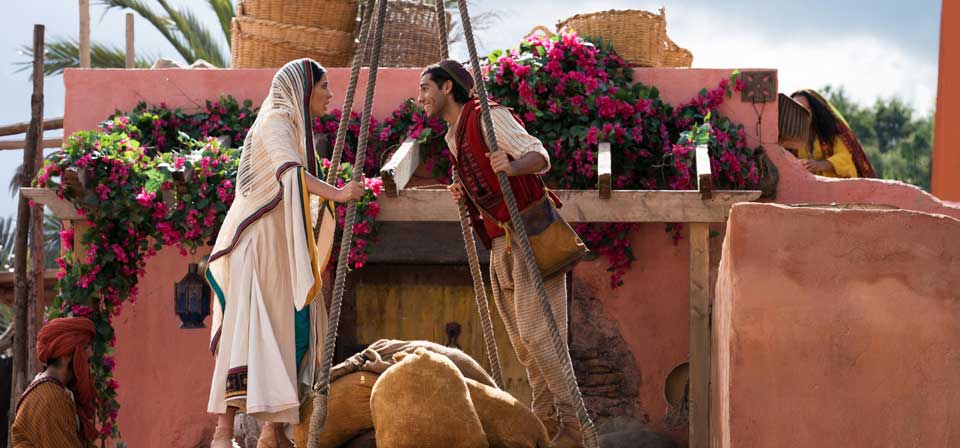
Aladdin (2019)
It’s the story you know already, almost exactly. They say the lines and sing the songs, the same songs, almost exactly. It’s a good story and they’re good songs. There are no spoilers in this review because how could there be?
![A Star Is Born [video]](/uploads/articles/starisborn.jpeg)
A Star Is Born [video] (2018)
So Bradley Cooper can direct and sing as well as act, and Lady Gaga can act as well as sing. The music is solid and sometimes excellent, but does Hollywood’s fourth take on this story have anything new to say?
![Mary Poppins Returns [video]](/uploads/articles/marypoppinsreturns-vid.jpeg)
Mary Poppins Returns [video] (2018)
And so does Dick Van Dyke — but if you want the return of Julie Andrews, the movie to see is Aquaman.
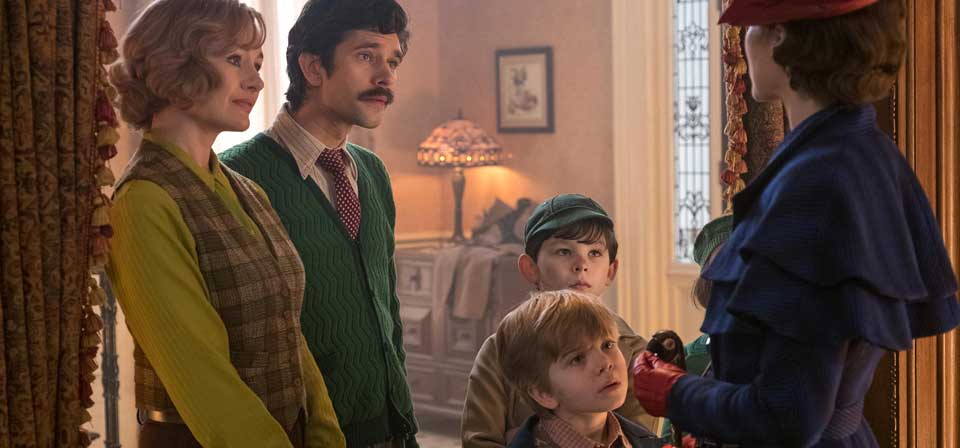
Mary Poppins Returns (2018)
Nostalgia for the original pervades virtually every aspect of the new film, from the production design of Cherry Tree Lane, where Emily Blunt’s Mary Poppins arrives to look after the next generation of Banks children, to the beat-for-beat exactness with which the sequel follows the original.
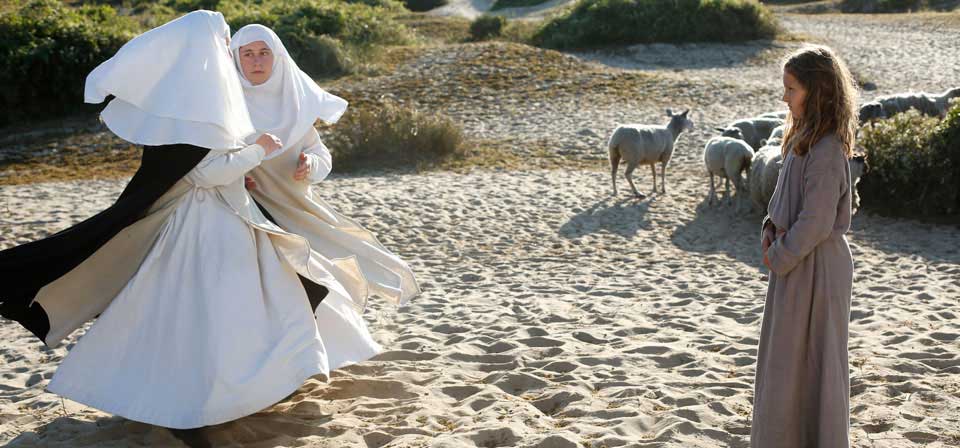
Jeannette: The Childhood of Joan of Arc (2018)
Jeannette is a dialogue, and a mutual cross-examination, not only among the main characters of the drama, and above all between man and God, but also between the poet Péguy and the filmmaker Dumont, and even between Péguy the Socialist unbeliever of 1897 and Péguy the believing Catholic of 1910.
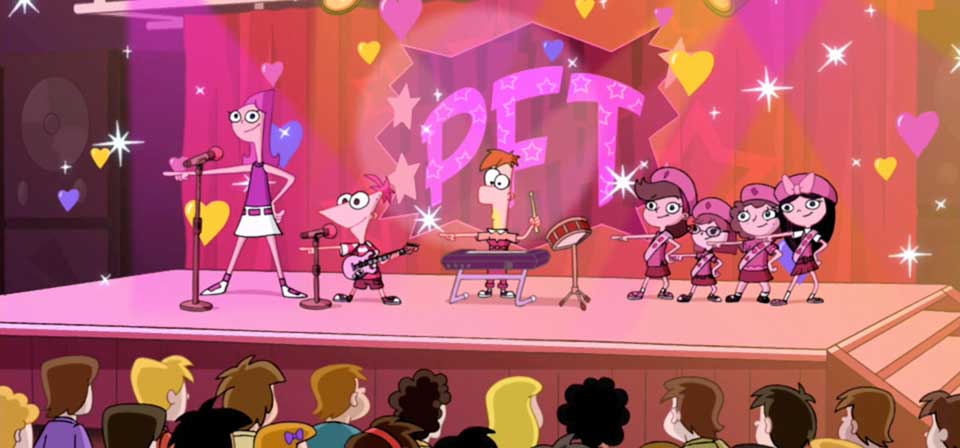
The subversive non-subversiveness of “Phineas and Ferb”
There are at least a half dozen reasons “Phineas and Ferb” never should have existed, and how fortunate for viewers of all ages that it does.
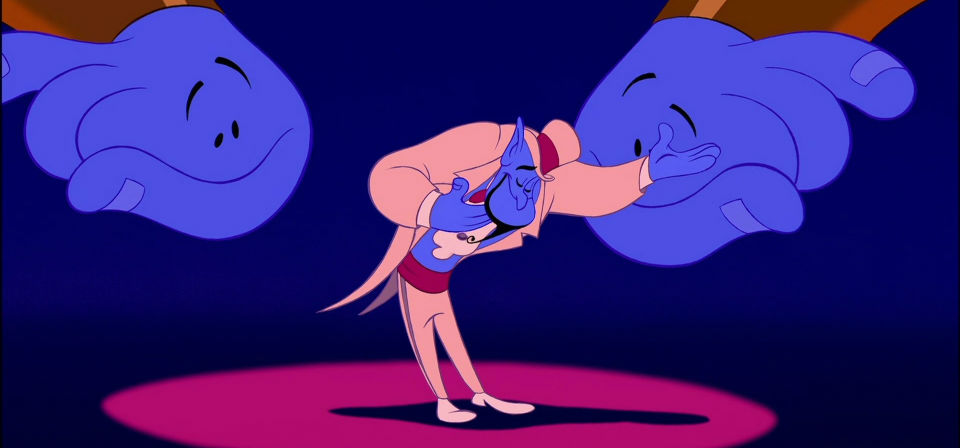
Aladdin (1992)
Disney’s Aladdin does more than give Williams an opportunity to let loose the comic giant inside him: It offers the Disney animators perhaps their greatest creative challenge, and inspiration, in over half a century.
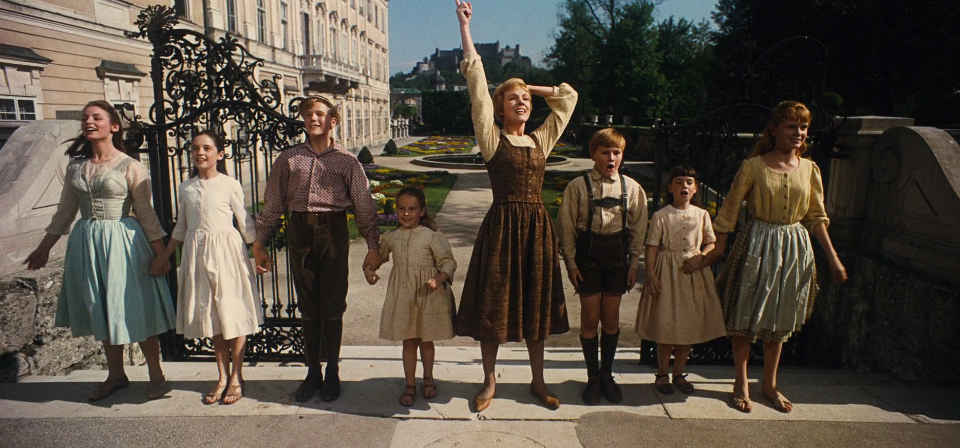
The Sound of Music (1965)
Half a century later, The Sound of Music is probably still the world’s favorite big-screen stage musical adaptation. Joyous, gorgeous, comforting, full of (almost) uniformly spectacular songs, the film’s emotional power is irresistible, even for the many critics, such as Pauline Kael, who hated its shallowness and emotional manipulation.
![Annie [video]](/uploads/articles/annie-2014.jpg)
Annie [video] (2014)
I want to say I love the idea for Little Orphan Hushpuppy … but I’m not convinced there’s actually an idea here.
Get On Up [video] (2014)
From the star of 42 and the director of The Help comes a film I enjoyed more than either of those.
Muppets Most Wanted [video] (2014)
Jason Siegel and Amy Adams are out. Can Ricky Gervais, Ty Burrell and Tiny Fey pick up the slack?
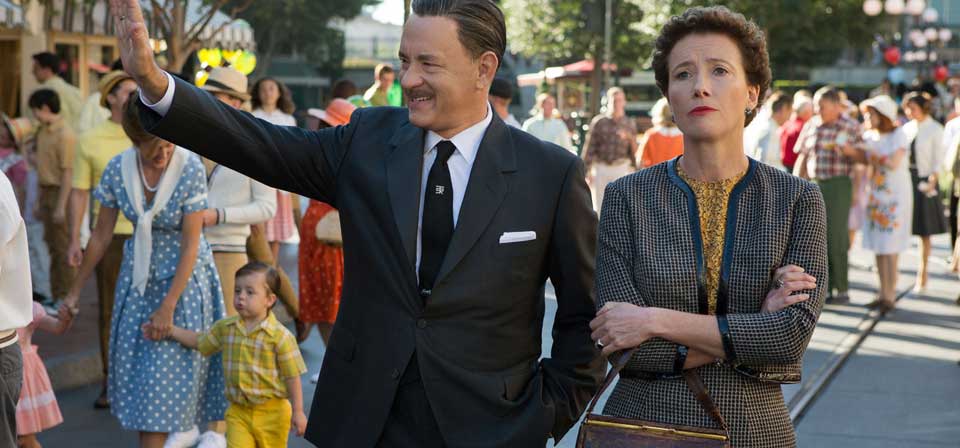
Saving Mr. Banks (2013)
Tom Hanks as Walt Disney. That’s almost enough to sell the picture by itself, isn’t it? Who but Hanks can one imagine in the role?
Black Nativity [video] (2013)
Of the 2013 Christmas season’s trio of religiously inflected Christmas movies, this one just might be the most deserving of your time.
The Wizard of Oz [video]
Digitally remastered from the original negatives, painstakingly restored, The Wizard of Oz celebrates its 75th anniversary in style. Here’s my “Reel Faith” 60-second tribute to this beloved classic.
Over the Rainbow: The Wizard of Oz Turns 75
So many songs about rainbows and what’s on the other side? What was Kermit talking about? There’s only one song like that … and one movie that embodies the childhood magic Jim Henson wanted to evoke.
Footloose (2011)
The upshot is that this new Footloose is a dumbed-down, sexed-up take on a story that was already risqué and not too bright — one that shies away from the ’84 film’s critique of the church, but is also further from its lingering Christian worldview.
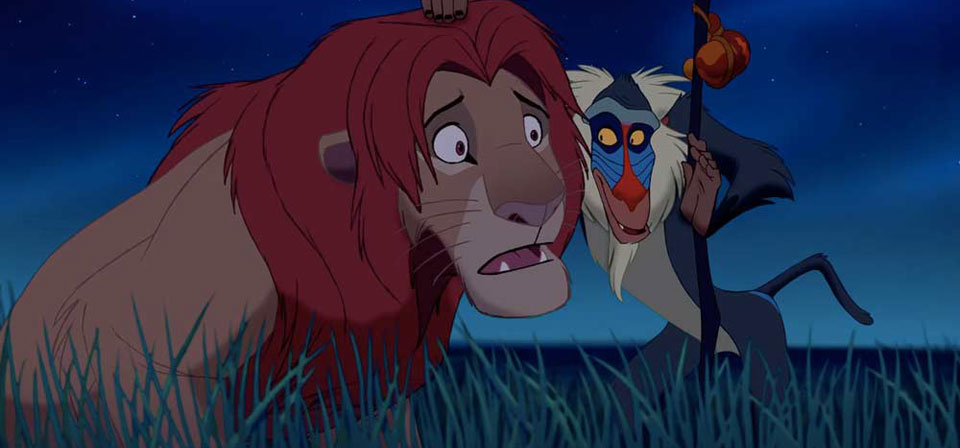
The Lion King (1994)
Chronologically, The Lion King stands between the striking triumphs of the early Disney renaissance (The Little Mermaid, Beauty and the Beast and Aladdin) and the bumpy deterioration of the latter 1990s (Pocahontas, The Hunchback of Notre Dame, Hercules, etc.). One way or another, it’s at the turning point between Disney’s creative renewal and its eventual decline. Fans might locate it near the pinnacle, along with Beauty and the Beast, but I don’t feel the love.
Beauty and the Beast (1991)
At the intersection of great animated films, great filmed stage musicals, and great fairy-tale romances, Disney’s Beauty and the Beast stands alone. Directed by Gary Trousdale and Kirk Wise, it is simply the quintessential Disney masterpiece, the perfection of everything that Cinderella, Alice in Wonderland, Sleeping Beauty and The Little Mermaid aspired to.
The Princess and the Frog (2009)
There’s a villain with magical powers — but instead of Disneyfied magic, like Aladdin’s friendly genie, the film’s New Orleans voodoo is an occult world of terrifying powers and principalities in which the villain himself is at much at risk as anyone. It’s almost Disney’s most overtly Christian depiction of magic and evil at least since Sleeping Beauty, if not ever — though the waters are muddied by a benevolent, swamp-dwelling hoodoo mama in a sort of fairy-godmother role.
Oliver & Company (1988)
The last gasp of Disney Animation’s post-Walt malaise before the 1990s Disney renaissance, Oliver & Company borrows names and vague situations from Oliver Twist, but in place of Dickens’s sentiment and Victorian moralizing Oliver has only a misguided stab at “attitude.”
The Wicker Man (1973)
Is The Wicker Man anti-Christian? Anti-pagan? Anti-religion? Where are its sympathies? Does it have any? Like baffled, blustering Sergeant Howie, blundering about the clannish Summerisle community trying to investigate a missing child, we are asking the wrong questions, assuming the wrong rules, wandering ever further off course, walking into a trap.
Once (2007)
At once delicate and gritty, wistful and deeply satisfying, John Carney’s Once is a intimate little film that, like a favorite song, you would rather play for someone than try to describe.
The Jungle Book (1967)
As interpreted by Disney and director Wolfgang Reitherman, The Jungle Book is essentially a coming-of-age parable about carefree childhood and adult responsibility, embodied respectively by Mowgli’s two mentors, Baloo the bear and Bagheera the panther (Sebastian Cabot).
The Dark Crystal (1982)
Imaginatively ambitious and often visually engaging, The Dark Crystal resolutely remains a distant, uninvolving experience. The filmmakers’ attention seems occupied by the technical challenges of bringing this fictional world to life; characters and emotions, even by the archetypal standards of high fantasy, never come to life, and the overarching mythology seems too self-consciously contrived rather than taking on a mythic reality of its own.
Happy Feet (2006)
No, it wouldn’t be entirely accurate to call the CGI cartoon Happy Feet an effort to claim penguins for the other side of the culture wars. But it wouldn’t be wholly wrong either.
Rodgers & Hammerstein’s Cinderella (1965)
There may be no dethroning the Disney cartoon as the definitive musical retelling of the story of Cinderella in the popular imagination; but for my money Rodgers & Hammerstein’s made-for-TV musical is a better take on the timeless fairy tale set in stone by Charles Perrault, and a better introduction to the story for children.
Rodgers & Hammerstein’s Cinderella (1957)
Despite the formidable star power of no less than Julie Andrews, this original version of Rodgers & Hammerstein’s made-for-TV musical Cinderella has been astonishingly neglected, overshadowed by the 1965 version starring Lesley Ann Warren.
Cinderella (1950)
Coming in the wake of a string of early classics — Snow White and the Seven Dwarfs, Pinocchio, Fantasia, Dumbo, Bambi — Disney’s Cinderella represents, alas, the early stages of Disney-itis.
Corpse Bride (2005)
As imagined by Tim Burton in stunning, wildly stylized stop-motion animation overtly reminiscent of The Nightmare Before Christmas yet technically far beyond it, this macabre fairy tale becomes, variously, a poignant meditation on the daunting weightiness of the vows of marriage, a raucous danse macabre in jumping jazz rhythms and florid colors, a visually rich celebration of Edward Gorey Gothic-Victorian and Charles Addams grotesque, and, perhaps most surprisingly, a touching portrait of tragedy, doomed love, empathy, and sacrifice.
Willy Wonka & the Chocolate Factory (1971)
Along with Chitty Chitty Bang Bang and The 10,000 Fingers of Dr. T, Willy Wonka illustrates the distinct possibility of telling a fairy-tale like story about a child transported to a fantasy wonderland, with brightly costumed little people singing and dancing and strange dangers to be negotiated, yet winding up with a film that is more a fond tribute to "pure imagination" than a triumph of it.
Charlie and the Chocolate Factory (2005)
Tim Burton’s Charlie and the Chocolate Factory is enough to make any fan of Roald Dahl’s most beloved novel cry — with delight at all the film gets so magically right, and with frustration that in spite of that the film is still nearly ruined by Burton’s obsessions and a spectacularly miscalculated performance by star Johnny Depp.
Bride and Prejudice (2004)
Now Nair’s compatriot Gurinder Chadha (Bend It Like Beckham) takes a much more thoroughgoing approach to Pride and Prejudice, going so far as to tweak the title to telegraph that this is Jane Austen gone Bollywood with a capital B — i.e., Bride and Prejudice.
Peter Pan (1953)
For millions of children and adults, Disney’s Peter Pan is THE Peter Pan, as well as a defining moment in Disney animation, giving the studio its logo mascot, Tinker Bell.
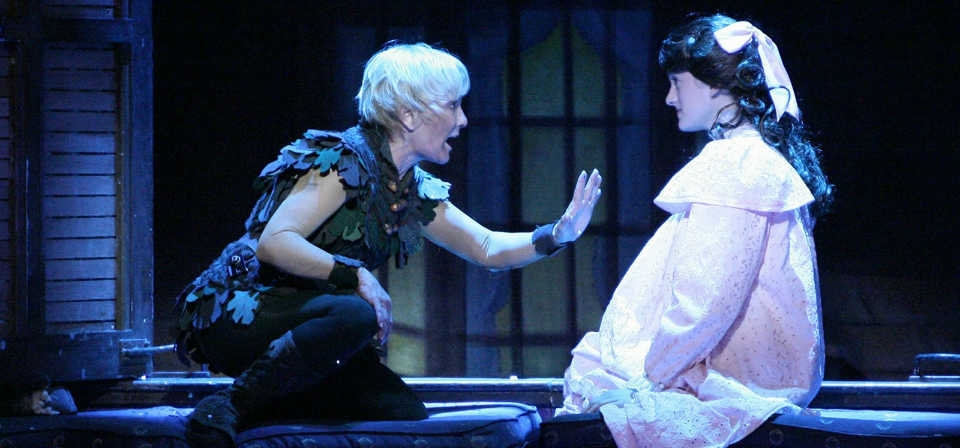
Peter Pan (2000)
It may seem heresy to baby boomers with fond memories of Mary Martin singing and flying on NBC, but this beautifully produced A&E restaging of the musical, starring gymnast-turned-actress Cathy Rigby, eclipses the beloved 1960 Martin kinescope in almost every way.
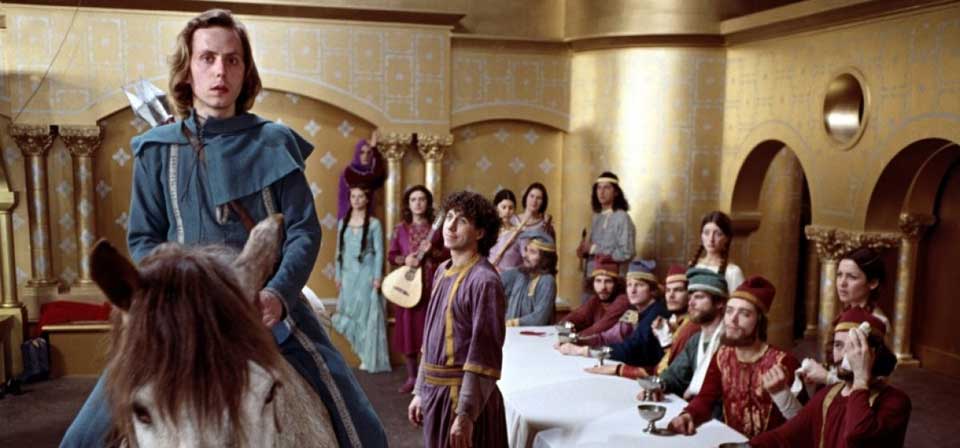
Perceval (1978)
The narration in verse has been set to music adapted from authentic medieval melodies, and is sung in the original old French by a chorus of minstrels playing traditional instruments, as well as by the players themselves. The players’ bright costumes and the overtly stagey sets — a grove of abstract sculpture-like trees for a forest; simple façade castles built of painted wood — were inspired by medieval paintings and illuminated manuscripts.
Fiddler on the Roof (1971)
L’Chaim! Life itself, joyous and tragic, is the subject of the boisterous, comic, heartbreaking vision of Fiddler on the Roof.

The Court Jester (1956)
Not only does it terrifically succeed where movies like Mel Brooks’ Robin Hood: Men in Tights miserably fail, The Court Jester also as merry, high-spirited, and wholesome as the adventures it parodies, with none of the cynical, anarchic spirit (or content issues) of the likes of Monty Python and the Holy Grail.
Holiday Inn (1942)
True to type, Crosby plays nice and Astaire shallow: Jim (Crosby) loves his dance partner and wants to marry her and settle down, but Ted (Astaire) wants to dance with her, and steals her away from Jim. Heartbroken, Jim retires to the Connecticut farm where he had hoped to settle down, but soon finds that show business is in his blood, and hits on the novel idea of turning his farmhouse into a dinner theater that operates only on holidays.
Oklahoma! (1955)
Oklahoma! was the first of Rodgers & Hammerstein’s musical collaborations, and it changed the face of musical theater.
Piglet’s Big Movie (2003)
With Piglet’s Big Movie, Pooh finally returns to his roots, bringing three of Milne’s original tales to the screen for the first time in an anthology-style story. Framed as a series of flashbacks in a story with Pooh and his friends searching for the missing Piglet, the movie recalls the tales of Christopher Robin’s expedition to the North Pole, the house at Pooh Corner, and the arrival of Kanga and Roo in the Hundred Acre Wood. Running through all three episodes as well as the framing story is the film’s unifying theme, little Piglet’s big heart and heroism.
Lilies of the Field (1963)
Sidney Poitier won a Best Actor Oscar for his portrayal of Homer Smith, a cheerful, itinerant Baptist handyman who one day pulls off the road and approaches a house with no more thought than to get water for his car radiator.
The Hobbit (1977)
Character design is a mixed bag: Gandalf looks very much himself, but Bilbo is rather cherubic, and the dwarves are uninspired. Worse is Gollum, disappointingly bloated and stiff rather than agile and emaciated, and the dreadfully goblin-like Wood-Elf King. (On the other hand, the Elf-lord Elrond, with his distinguished features and strange crown-halo, is far preferable to Bakshi’s dismally graceless version of the same character.)
The Return of the King (1980)
The film hits the most critical plot points, but is clearly aimed at the younger set, with little to interest even the most avid adult Tolkien and/or animation buff. Unfortunately, this style works even less well here than in The Hobbit, which really is a children’s story. Tolkien’s Lord of the Rings is a much more adult work, but Rankin-Bass essentially makes a kid movie out of it. Even so, for kids too young for the Jackson or even Bakshi versions, the Rankin-Bass cartoons might be just the ticket.
Return to Never Land (2002)
Return to Never Land is Peter Pan Lite, if I can say that without conjuring images of low-fat peanut butter.
Top Hat (1935)
The quintessential Fred-and-Ginger vehicle, Top Hat features some of the most glorious, memorable dance sequences ever filmed.
Duck Soup (1933)
Probably the greatest and funniest film from one of the cinema’s funniest acts, Duck Soup is as absurdly nonsensical as comedy can be and still be about something.
Robin Hood (1973)
Oo-de-lally! As post-Sleeping Beauty Disney animated features go, Robin Hood is a fine entry, better than The Sword in the Stone or The Fox and the Hound but not as good as The Jungle Book or The Many Adventures of Winnie the Pooh.
The Many Adventures of Winnie the Pooh (1977)
In retelling these tales, the Disney animation house inevitably, yes, Disneyfied Milne’s creations, as it did everything it touched, from the dwarfs in Snow White to the satyr in Hercules.

Sleeping Beauty (1959)
A worthy successor to the early classics Snow White and Pinocchio, Sleeping Beauty is the one great fairy-tale adaptation of Disney’s post-war period, outshining Cinderella and unrivaled until 1991’s Best-Picture candidate Beauty and the Beast.

Road to Morocco (1942)
This time out the boys take their Road act to Arabian Nights territory, where, as usual, they sing (especially Bing), crack wise (especially Bob), and vie over Lamour, who again has an agenda of her own. The story, which is taken about as seriously as the plot of a typical Looney Tunes cartoon, has Bing and Bob shipwrecked and washed up on the road to Morocco.
An American in Paris (1953)
In a conceit both touching and surreal, Kelly plays an American ex-G.I. in Paris who’s never wanted anything but to paint, though he’s obviously the best hoofer in France.
Moulin Rouge! (2001)
Damning with faint praise? More like praising with faint damns. Moulin Rouge! is a failure: a towering monument of wasted potential, of lost opportunity, of good ideas gone bad and bad ideas gone amok. It’s got the same attention-grabbing take-no-prisoners style (though on a far larger scale) as Luhrmann’s first film, the sublime Strictly Ballroom; but that film had something Moulin Rouge! can’t be bothered with: characters who emerged from their situations as real and likeable people. Moulin Rouge! even recycles plot elements from the earlier film: A naive but talented young outsider falls for a driven, unattainable professional whose Svengali-like handlers oppose the relationship for self-interested reasons. There’s even a climactic scene that mirrors the grand finale of Ballroom in such specific detail that Luhrmann could sue himself for plagiarism; but what he can’t replicate is the first film’s heart appeal.
Chicago (2002)
(Co-written with Emily Snyder) Like Moulin Rouge!, Chicago involves sordid goings-on in a rather seamy milieu; but where the earlier film tried to contrast its dissolute ambiance with heart-warming sincerity and idealism, Chicago is cynical to the core.
Singin’ in the Rain (1952)
Celebrating its 60th anniversary in style, Singin’ in the Rain comes to Blu-ray with an astoundingly good-looking new transfer of the best available film elements.
Joseph: King of Dreams (2000)
Joseph’s own dreams — the two biblical ones plus an extra one — are the best; I caught my breath at the first glimpse of these dreams, which look like living, flowing Van Goghs. The dream-sky swirls like Starry Night, and the grass ripples under the dream-Joseph’s feet like ripples in a pond. The dreamlike quality of these sequences is undeniable and memorable.

Fantasia (1940)
If Fantasia failed to spark a hoped-for entertainment revolution, its achievement is all the more starkly singular. A joyous experiment in pure animation, an ambitious work of imaginative power, a showcase of cutting-edge technique, and a celebration of great music, it is without precedent and without rival. I’ve watched it far too many times to count, and I have yet to begin tiring of it.
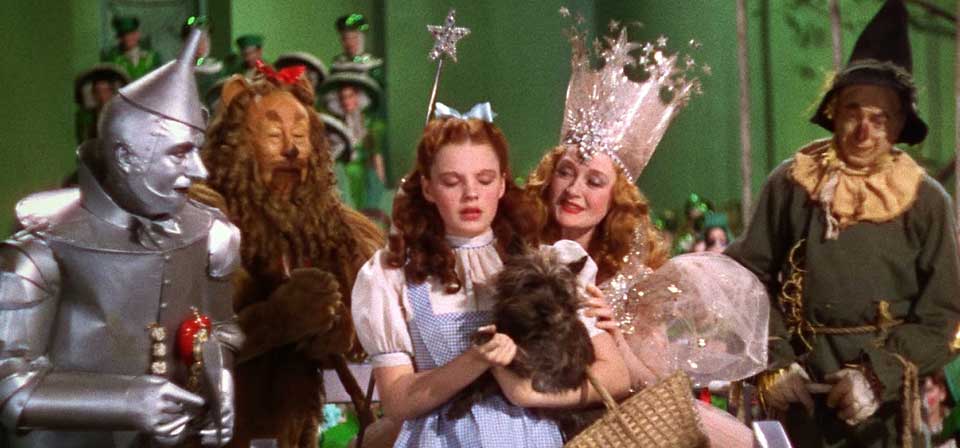
The Wizard of Oz (1939)
The Wizard of Oz is one of a very few shared experiences that unite Americans as a culture, transcending barriers of age, locale, politics, religion, and so on. We all see it when we are young, and it leaves an indelible mark on our imaginations. We can hardly imagine not knowing it. It ranks among our earliest and most defining experiences of wonder and of fear, of fairy-tale joys and terrors, of the lure of the exotic and the comfort of home.
Recent
- Benoit Blanc goes to church: Mysteries and faith in Wake Up Dead Man
- Are there too many Jesus movies?
- Antidote to the digital revolution: Carlo Acutis: Roadmap to Reality
- “Not I, But God”: Interview with Carlo Acutis: Roadmap to Reality director Tim Moriarty
- Gunn’s Superman is silly and sincere, and that’s good. It could be smarter.
Home Video
Copyright © 2000– Steven D. Greydanus. All rights reserved.